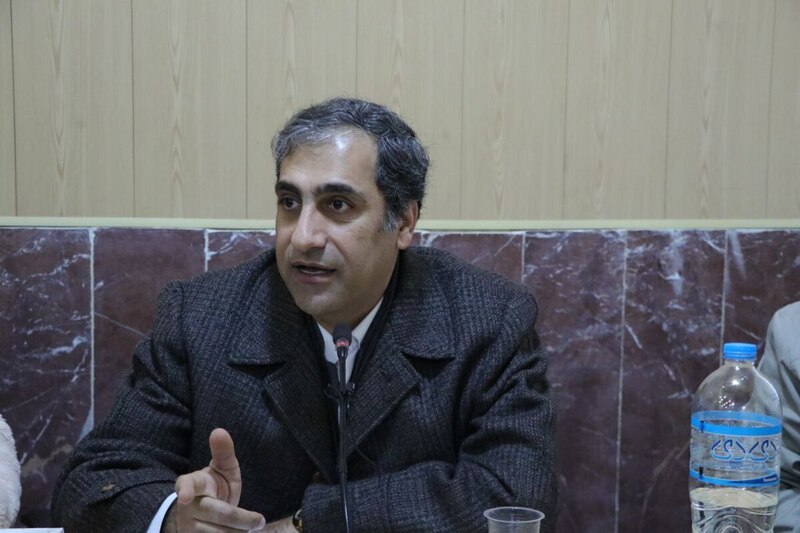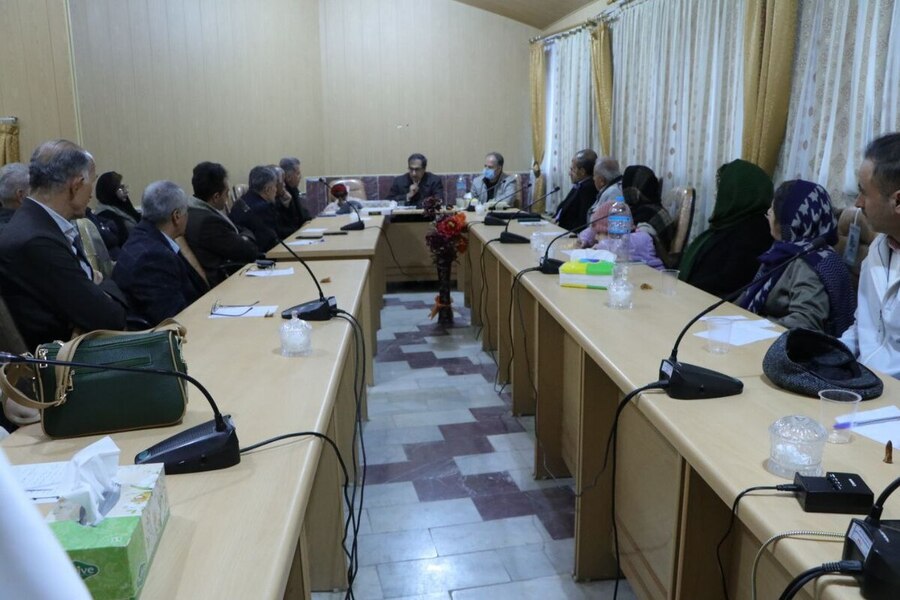Peshawa Kurdistani
"Myth is like history revealing the original roots of a nation." Dr. Jabbari said in a part of his speech. "Myth talks about the worldview which is myth's greatest difference with history. Myths tell us where this worldview came from and how it was established. In my opinion, a nation who do not possess myths is just like a natural plant blowing away with the wind, it might grow on a piece of land but it will move away easily. Let us remind ourselves that most of our neighboring countries are trying to create myths for themselves. For instance, "Shamaran" is a Kurdish myth. That is, based on all the research that has been done, Shamaran belongs to the Kurdish people and it has happened in Kurdistan. However, now the Turkish government has put a statue of Shamaran in Izmir city, writing several books about it, trying to introduce it as a Turkish myth. I mean this is an important subject for us."
There is a village in the Hawraman region called "Naw" where the "Anahita" myth is still popular among the people in the form of an annual celebration. However, nowadays, people around the world believe that Anahita is an Iranian goddess. They do not say she belongs to Zagros or Kurdistan; because this myth will give the Kurds original roots in this land. Anahita does not exist in "Kazeroun", in "Khorasan" or generally among the Persians before Ardeshir II of the Achaemenid. It is important to know that Herodotus says: that a large statue of Anahita existed in one of Ecbatana towns which was the Medes' capital city long before the Achaemenids. It means that this myth is from Kurdistan and Zagros. These are significant parts of our nation's identity. In Turkey, they consider the "Iliad and Odyssey", the Greek myths, as Turkish myths. Recently, archeologists have discovered a place and they claim it belonged to the "Iliad". Turkey is trying to claim this myth to be Turkish to gain the validity of being an original nation in this land. This is our most important evidence to show how significant myths are because they reveal a nation's roots in a land. the more a nation finds myths that belong to them, the more they can have a claim over their historical roots and origins in one land.

What is Myth?
Is myth such an abstract concept that we cannot know what it is? Do we not know its aspects? Where does it start and end? It is better to change this question and ask ourselves: what is not a myth? Because it is a very slippery subject that cannot be tamed. Thus, it is important to separate those things that are not myths to discuss myths later. Let us talk about the word "myth" itself.
Originally, this word came from "historia" which is a Latin word, and it means searching and knowledge; it also means "story". There are two words in the European languages that originally are derived from this word; "history" which means events that have happened in the past and "story" which means a tale. Nowadays, among the European languages, they do not use the word "historia", instead, they use "myth". We can also do that and use the word myth instead of historia and for the knowledge of this field we can use "mythology". There are a few words in the Kurdish language for the myth that are not suitable enough, unfortunately. One of them is "Afsana" which is a Persian word; it is used in the South part of Kurdistan commonly which is not an accurate word to be used instead of myth. In Persian, Afsana means a fictional story. Myth carries a worldview within it. In the Southern part of Kurdistan, they also use "Dirok" and "mythology" which are better words by definition but it is better to use "historia" instead. This word has been Arabized in the form of (اسطوره) which means worldview. It is the best word we can use.

"Historia" is close to three other sciences including: "History", "Archeology", and "Theology".
First, "history" which is a science using evidence to talk about the reasons and qualities of events that have happened. "Historia" is not this; it does not look for evidence, and it does not discuss the 'how's and 'why's of the events. It talks about the worldview. The word "worldview" has such strong ties with "Historia" that if they are separated nothing will be left for historia other than a few simple childish tales. Thus, the fundamentals of historia are based on "worldview".
Second, we have "archeology" which talks about something that traces back to prehistorical eras. For instance, it talks about the ice age or before that. The archeologists find things or traces that belong to 13 thousand or 14 thousand years ago like a carved stone and they claim it to be a dagger or knife. This does not belong to history.
The third science is "theology" which talks about the metaphysics and heavens and the relationship between the metaphysics and humans. Theology shows how religions developed and how they conducted rituals and ceremonies. Each of these topics can potentially become a subject for more theological research.
Now an example will be discussed to show the common points between historia and these three sciences. A dagger is found, and this is a subject; the "archeologist" says: what is the material from which this dagger had been made, where was the kiln in which it was made, how did they use it, was it used for killing enemies or simply for cutting fruits. They also tell us that a similar object was found in another place thousands of kilometers away from other nations. The historian asks: who used it, whom they killed with it, what dynasty came to power after that murder event, or which dynasty ended. The theologist looks for the temple and religion. They say let us find a temple where the dagger was found so that we could find out in which religious rituals the dagger was used. However, the "mythologists" look at the dagger's handle and see a carving on it that resembles a god's picture. Perhaps a goddess or a symbol based on which they can tell us what was the worldview of people at that time. Or what kind of beliefs did the owner of this dagger have? Where was the original place of this belief?
These three science experts should not interfere with mythology because it will make things complicated. In the past decades, some historians have presented historical research about the "Kawa and Zohak" myth which is in fact a myth. In the fifth century AD, "Mousa Khoreni" wrote Armenia's history. at that time, it was common to combine history with stories, and in that story, the king should have fought a dragon. The Armenian "Mousa Khoreni" said: that this Fereydoun is actually "Cyrus" who fights with a dragon named "Astiak". Thus, he put the first building block of a false history and nowadays the Europeans consider this as the Medes and Achaemind's history. However, for a mythologist, this story is completely wrong. For the mythologist, this is the story of using iron. During the Iron Age, people found a kind of stone from the Zagros mountains, they melted it and made daggers, swords, and knives out of it. This is an important event in the history of humanity which was first conducted by the Kurds. This is "Ghrishman's" narration who was a great German historian. The story of taming iron became the myth of Kawa and Zohak which has nothing to do with the Medes and Achaemenids.









